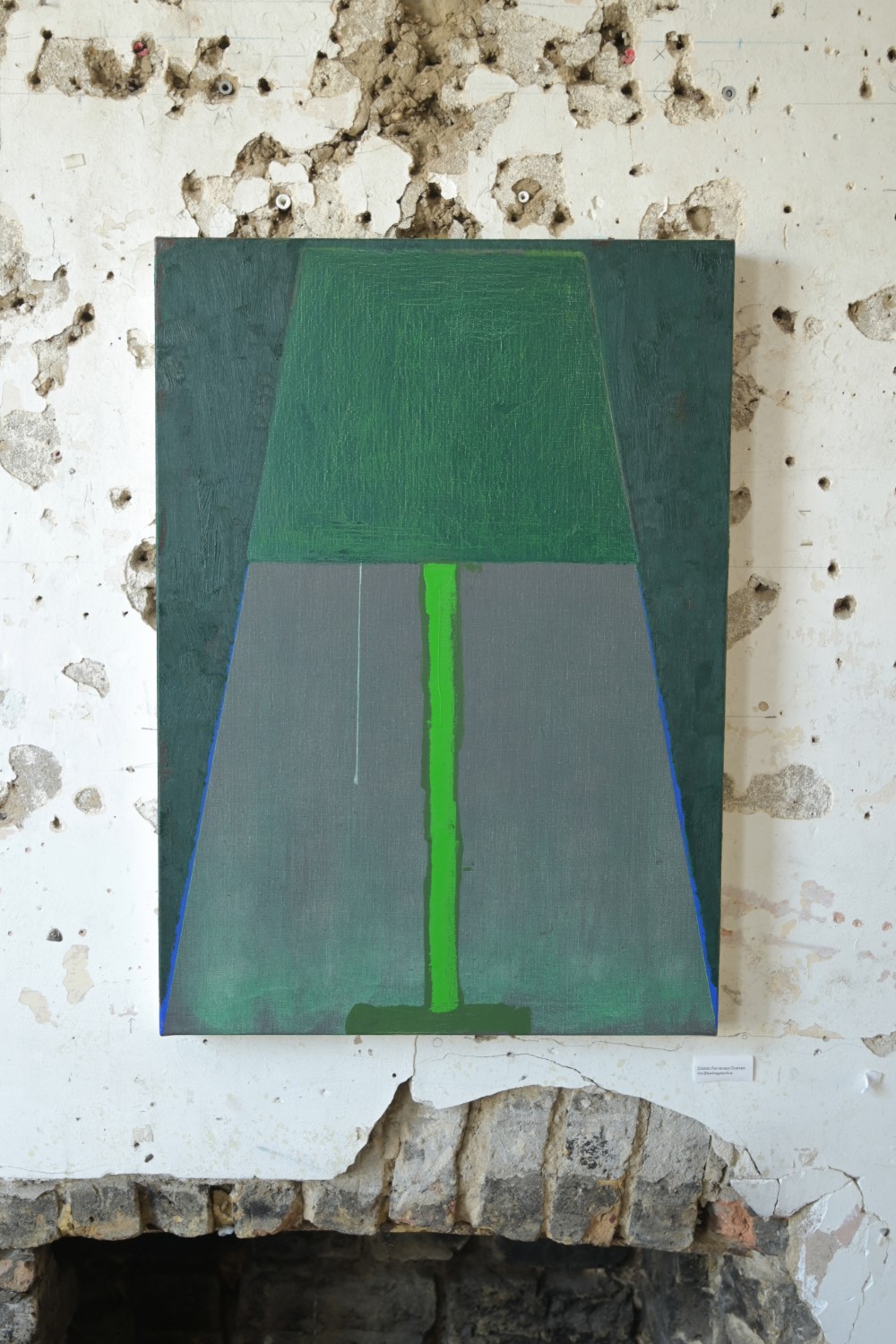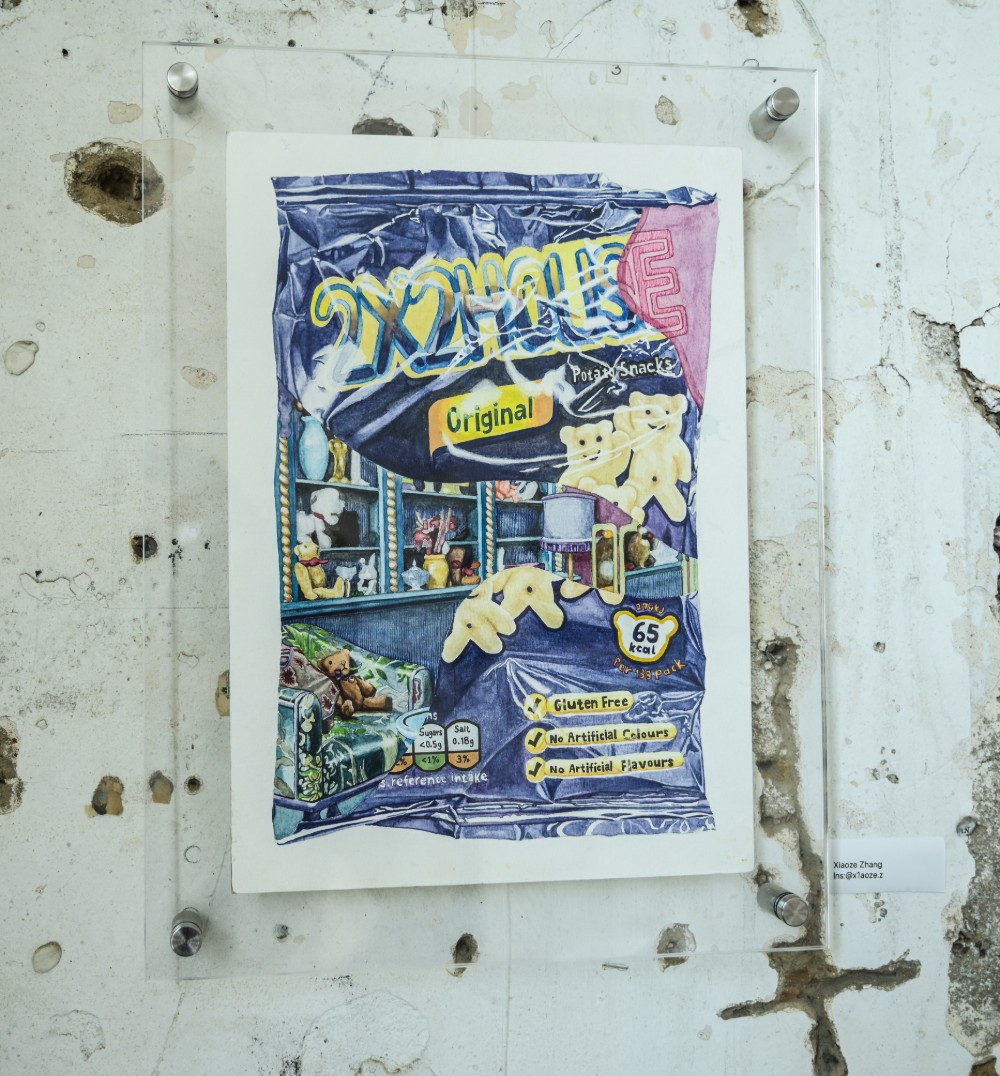What does “home” mean when borders shift, housing feels temporary, and identities stretch across continents? “Home, Troublesomely Eases Me Out: A Modern Nomadic Melodrama”, held at the atmospheric Safehouse 2 in Peckham in the end of this summer (August 20-25, 2025), curated and designed by Yuan Zhang, Jiqiu Zhang and Lu Wang. Safehouse 2 is a ruin made into possibility: peeling paint, exposed beams, and fractured walls that carry the memory of another life. Its raw and fragile architecture becomes more than a backdrop, it is an active collaborator in this exhibition, where which combined the venue and exbibits together as a huge integral installation. Within its decayed rooms, the question of what “home” means gains urgency: is it protection, or confinement, or something we constantly rebuild?
Gathered artists from across the globe to explore belonging through images, sounds, performances, and materials. The result is less a fixed picture of home and more a moving stage, a nomadic melodrama where memory, imagination, and resilience play side by side.

The exhibition was also anchored by two participatory workshops. A cross-cultural dining workshop, led by a second-generation immigrant artist, Yufei Lucía Jiang turns food into a living archive of migration, where recipes transmit memory across generations. A comics and mental health workshop by Jiahao Ji reframes drawing as a therapeutic act, allowing participants to translate vulnerability into shared narratives. These projects highlight art as a practice of care, extending beyond representation into lived exchange.
On the visual front, artists bring their own stories into dialogue. Tobias Carlton examined how personal symbols meet public imagery, questioning where identity is anchored. Lingjun Feng worked with memory and landscape, layering fragments that speak to the instability of belonging. Cristián Fernández Ocampo took domestic environments apart, abstracting furniture and rooms into fractured geometries that echo the uncertainty of migration.
Anqi Lin used photography to bridge the intimate and the social, while Olivia Mary Birch turned to material experimentation, highlighting the body’s fragility and strength. Yixuan Yang brings a digital lens to the idea of home, while Ruilin Fu took a conceptual route, probing the very act of looking. Xiaoze Zhang combined painting and research, using visual forms as a way to ask deeper questions about identity and cultural context.
The dialogue continues upstairs. Jianing Han offered delicate reflections on sensory experience, and Roisin Bunting experiments with form and surface as part of her emerging practice. Belen Santamarina made one of the show’s most personal contributions: working with hair, embroidery, and crochet learned from her female relatives, she turns techniques once dismissed as “domestic craft” into powerful artworks. Her practice challenges gendered hierarchies and created moving autobiographical narratives that resonate with migration and memory. George Hinks adds works that hover between figuration and abstraction, evoking feelings of uncertainty and in-betweenness.


Photography takes new shapes in Yulai Xu’s monologic portrait images, which question the aesthetics of consumer culture, and in Xinrui Qiu’s Neither Here Nor There, an analogue project that suspends its subjects in limbo, between presence and absence. Lu Zeng used poetry to explore how words can frame cultural memory and displacement. Yan Wu brought a meditative tone to the exhibition. Working with ink and pigments on rice paper (Xuan Zhi) she reimagined traditional Chinese ink calligraphy-painting, repositioning motifs like birds in contemporary settings, exploring the intersection of languages, culture, materiality, text and poetry. Her delicate surfaces radiate quiet resilience, inviting viewers to pause and reflect on hybridity, displacement, and healing.
Performance and sound add further layers. Ya Shu’s dance work partnered with Alice Herzog showed the body as both vulnerable and resistant, moving through space with urgency and grace, with the flickering silhouette projected on Shu’s bamboo puppets installed in the space. Zhuping Zhong’s painterly interventions playfully disrupted surface and depth, hinting at the hidden layers of personal narrative. Meanwhile, Muqing Liu immersed listeners in soundscapes built from water and tides, compositions that feel like memory washing in and out with the current. The exhibition closed with a performance designed and directed by Lu Wang, performed and choregraphed by Congfang “Spring” Xiao and Yu “Emma” Ai that lingers in the senses, silkworm cocoons, fragile yet potent, appear as both shelter and constraint. Their colours, scents, and ruptures echo the ambiguities of home, at once protective and suffocating, while a single creature’s refusal to spin gestures toward resistance and transformation.
What makes this exhibition stand out is how each artist adds a fragment to a larger story. Carlton, Feng, and Zhang probe symbolism and abstraction. Lin, Xu, and Qiu rethink photography. Santamarina and Ocampo reshape domestic space into counter-narratives. Wu reimagines tradition as a site of hybridity. Liu, Shu, and Wang’s works bring sound and the body into the frame. Together, these practices suggest that home is not one thing, but many shifting, fragile, and constantly being remade.
At a time when so many people feel uprooted, by migration, by housing insecurity, by cultural displacement. This exhibition doesn’t offer a neat answer to what home is. Instead, it offers a stage where different voices, memories, and gestures coexist. It reminds us that home is not just where we come from, or even where we live now. It is something we keep building, in kitchens, in conversations, in art, and in imagination.
Ultimately, the exhibition resists nostalgia or closure. It insists that home is not given but constantly made and remade, through memory, through encounter, and through art itself. In this nomadic melodrama, the audience is invited not to seek resolution, but to inhabit the fluidity of belonging.
Words by Yuan Zhang.
Great Job Our Culture & the Team @ Our Culture Source link for sharing this story.





